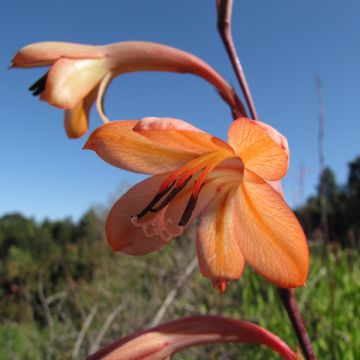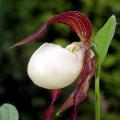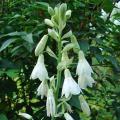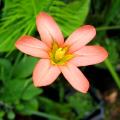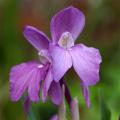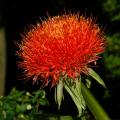Watsonia
Does this plant fit my garden? Set up your Plantfit profile →
Available in 1 sizes
Available in 1 sizes
Available in 2 sizes
Available in 1 sizes
Available in 1 sizes
Originally from the western Cape Province in South Africa, the Watsonia pyramidata is a non-hardy bulbous plant, bearing tall spike-like inflorescences in spring, adorned with numerous crocus-like flowers in a particularly delicate and bright peachy pink. It is easy to grow in pots, but very delicate in open ground under cold temperate climates. For a modern exotic-looking flower bed, mix your Watsonia bulbs with Kniphofias, Crocosmias, Libertias, and Carex. This plant is cultivated in the same way as gladioli, which are dug up after the foliage has turned yellow, and then replanted early in spring, it will then flower a little later. It also makes beautiful potted plants for terrace or balcony decoration.
Also originating from South Africa, the Watsonia meriana is a semi-hardy bulbous plant, bearing lovely salmon pink inflorescences in early summer. Its upright inflorescences are 80cm (32in) to 1m (3ft) in height, with trumpet-shaped flowers in shades of pink-orange, 4-5cm (2in) in length, horizontally positioned on the inflorescence. These architecturally structured flowers create very original striking scenes.
Hardy down to -8°C (17.6°F), the Watsonia meriana likes moist, sandy soils and dislikes heavy, wet, and limestone soils, as well as cold winds in winter. Plant it facing south, on a sand dune, in a rockery or on a slope. When planting, replace your topsoil with pure sand to maximise drainage for the bulb. In colder regions, store the bulbs in a box filled with compost and keep them in a dry and frost-free place.
Haven't found what you were looking for?









































